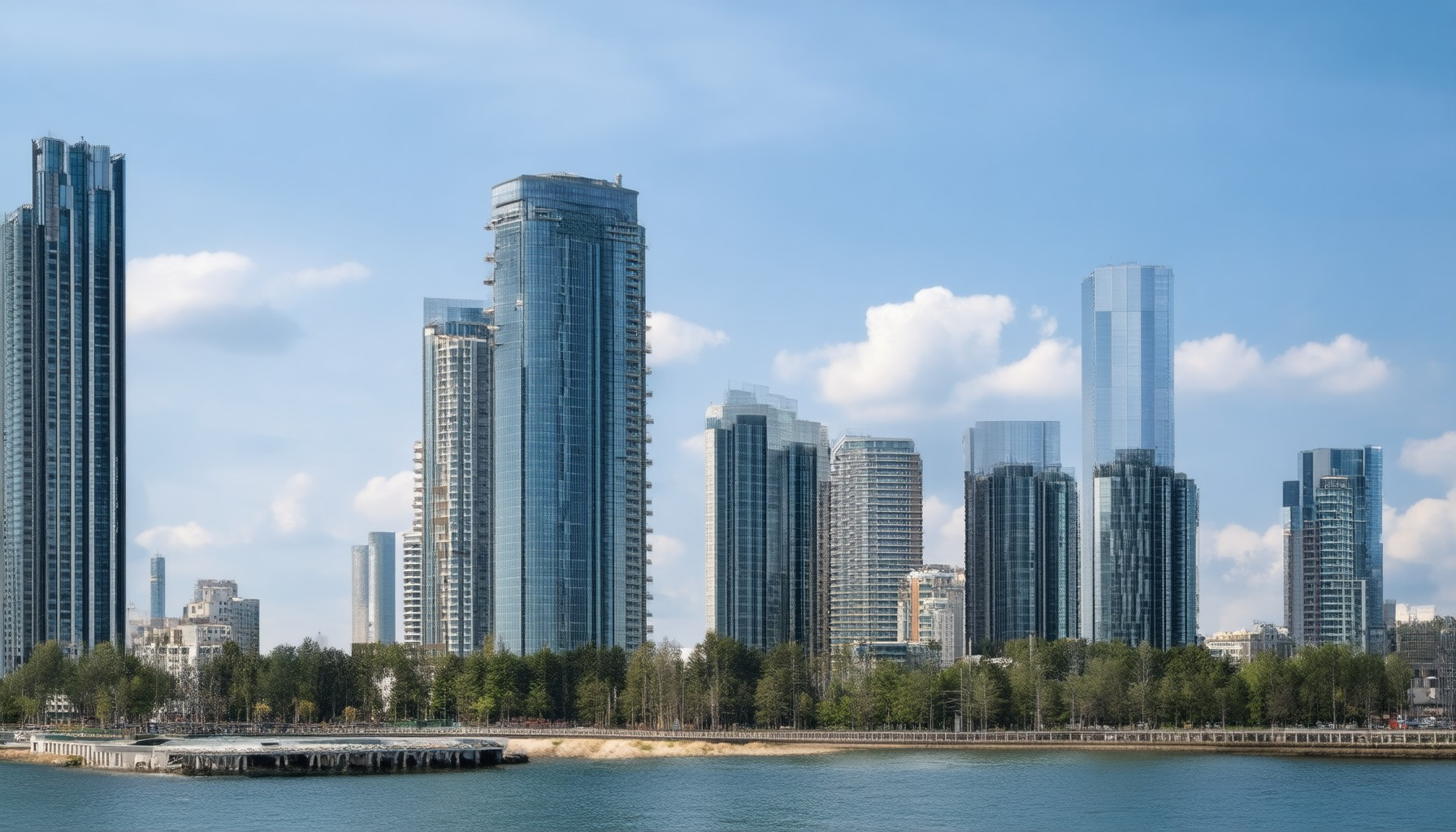Are you looking to capitalize on the booming rental market and uncover the areas with the highest demand in 2025? The rental property landscape is evolving rapidly, offering unprecedented opportunities for investors seeking maximum profitability. With rising demand for housing across the country, identifying prime rental markets has become crucial for those aiming to achieve long-term success in this lucrative sector. Whether you’re a seasoned investor or just starting out, understanding where the highest demand lies can make a significant difference in your real estate endeavors. In this comprehensive guide, we’ll delve into the key factors shaping the rental market, highlight the best cities and regions to invest in, and provide actionable strategies to maximize your returns. From understanding market trends to exploring investment-worthy locations, this article equips you with the knowledge needed to navigate the rental property market with confidence and precision.
Key Takeaways
- To Achieve $5,000 Monthly Rental Income: Aim for 8-10 well-managed properties by balancing the 1% rule and 50% rule.
- Maximize Profits in High-Demand Areas: Focus on prime rental markets with strong demand to boost returns and reduce risks.
- Optimize Your Investment Strategy: Use tools and consult professionals to tailor your approach to local market conditions.
- Diversify for Stability and Growth: Spread investments across various locations to mitigate risks and enhance profitability.
- Master the 50% Rule: Set realistic rent prices and assess profitability by understanding this key guideline.
- Consider Management Costs and Taxes: Factor in property management fees and taxes when calculating net profit.
- Target Prime Rental Markets: Invest in areas with high demand to achieve maximum returns and long-term success.

The 2% Rule in Rental Property Explained
The 2% rule is a fundamental guideline used by real estate investors to assess the potential profitability of rental properties. Here’s a detailed breakdown:
Definition
The 2% rule states that rental income from a property should cover at least 2% of the property’s purchase price. This percentage is based on the total debt used to acquire the property, often referred to as the “debt service.”
Importance of the 2% Rule
This rule helps investors determine if a property is likely to generate enough cash flow to cover expenses, including mortgage payments, property taxes, insurance, and maintenance costs.
Calculation Example
Suppose you buy a rental property for $200,000 with a 20% down payment ($40,000) and a 30-year mortgage. The monthly mortgage payment would be approximately $1,041.87. To meet the 2% rule, rent should ideally cover $1,041.87 per month. Therefore, rent should aim to be around $3,750 per month.
Factors Influencing the 2% Rule
- Property Location: Properties in high-demand areas may command higher rents, making the 2% rule easier to achieve.
- Property Condition: Well-maintained properties often attract higher tenants, increasing rental income.
- Rental Management: Effective property management can maximize rental income and minimize vacancies.
Improving Cash Flow
To enhance profitability beyond the 2% rule, consider: – Increasing the rent gradually over time. – Implementing lease renewal strategies to secure long-term tenants. – Utilizing professional property management services to optimize revenue streams.
Key Considerations
While the 2% rule is a useful tool, it’s essential to conduct thorough market research and evaluate local demand before relying solely on this metric. Consider consulting with a financial advisor or real estate expert to tailor your investment strategy to local conditions.
Explore locations that align with your investment goals, and learn more about managing your property effectively .
By applying these principles, you can make informed decisions that position your rental property for sustained success.
What City Has the Highest Rental Demand?
Miami tops the list as the city with the highest rental demand in the United States. With an RCI (Rental Competitiveness Index) of 91.9, Miami boasts a 96.5% occupancy rate and units are often rented within 36 days. The high demand is driven by its tropical climate, thriving economy, and significant tourism.
- Miami, FL – RCI: 91.9, Occupancy: 96.5%
- San Francisco, CA – RCI: 88.2, Occupancy: 95.1%
- New York, NY – RCI: 87.8, Occupancy: 94.7%
- Los Angeles, CA – RCI: 86.5, Occupancy: 93.8%
- Chicago, IL – RCI: 85.3, Occupancy: 92.4%
- Austin, TX – RCI: 84.7, Occupancy: 91.9%
For more information on rental market trends and insights, visit Real Estate Locations .

What Type of Rental Property is Most Profitable?
Profitability in rental properties largely depends on location, property condition, and management strategy. Here are some of the most potentially profitable types of rental properties:
- Single-Family Homes : These can be highly profitable, especially in high-demand areas. They often command higher rents due to their size and privacy.
- Townhouses or Condos : These properties are typically easier to manage and often have lower maintenance costs compared to single-family homes. They also tend to appreciate more in value.
- Multi-Family Properties : Apartment buildings or large rental homes can generate significant income due to higher unit occupancy rates. However, they may require more active management.
- Student Housing : Properties near universities or colleges can be very lucrative, especially during the academic year. Demand is typically high, but management can be challenging.
- Luxury Vacation Rentals : Properties in prime locations, such as beaches or mountain retreats, can generate substantial income during peak seasons. However, they may require more effort to maintain and market.
- Commercial Properties : Retail spaces or office buildings leased to businesses can be profitable, though they cater to a different market segment.
To maximize profitability, consider properties in growing neighborhoods, ensure regular maintenance, and implement effective rental management strategies.

How Many Rental Properties Are Needed to Earn $5,000 Monthly?
To generate $5,000 monthly from rental properties, you’ll need to balance the 1% rule and the 50% rule effectively. Here’s a breakdown:
- 1% Rule : Aim for rental income equal to 1% of the property’s purchase price. For example, a $100,000 property should generate $1,000/month in rent.
- 50% Rule : Subtract 50% of the gross rent to cover operating expenses. On the same $100,000 property, this leaves $500/month as net profit.
Combining these, each property can contribute approximately $500/month towards your $5,000 goal. To achieve this:
- Option 1 : Use 10 properties, each generating $500/month.
- Option 2 : Optimize by increasing rent slightly above the 1% rule, potentially reducing the number to 8-9 properties.
Consider property management fees, taxes, and maintenance, which can impact profitability. Diversifying across locations and focusing on high-demand properties can enhance returns and reduce risks.
By strategically applying these rules and optimizing property selection, you can achieve the desired $5,000 monthly income with 8 to 10 well-managed rental properties.
The 50% Rule in Rental Properties
The 50% rule is a common guideline used by real estate investors to evaluate the potential profitability of rental properties. Here’s a breakdown of the rule and its implications:
- Definition of the 50% Rule: The rule suggests that a rental property should generate enough income to cover 50% of its total expenses, with the remaining 50% representing profit.
- Key Components:
- Gross Rent Multiplier (GRM): This is calculated by dividing the property’s rental income by the sum of its expenses. A GRM of 1.0 indicates break-even, while a GRM greater than 1.0 indicates profit.
- Expenses Covered: These typically include property taxes, insurance, utilities, maintenance, and management fees. Some versions of the rule exclude mortgage-related expenses, while others include them.
- Practical Application: To apply the rule, divide the monthly rent by the total allowable expenses. If the result is less than 1.0, the property may not be profitable. Aim for a result of at least 1.5 or higher for better returns.
- Variations of the Rule:
- Some experts recommend aiming for 60% coverage of expenses to account for unexpected costs.
- Others advocate for a stricter 50% rule to ensure consistent profitability.
- Why It Matters: The 50% rule helps landlords set realistic rent prices and assess the financial health of their properties. It also serves as a benchmark for comparing potential investments.
By applying the 50% rule, investors can make informed decisions about rental properties, ensuring they align financially with their goals. This rule, along with careful analysis of market conditions and local laws, forms the foundation of successful rental property investing.

How Many Rentals Do You Need to Make $100k a Year?
Determining the number of rental properties needed to generate $100,000 annually involves several factors, including cash flow, property type, location, and personal financial situation.
Assuming an average cash flow of $1,000 per month per property, you would need approximately:
- 8-10 properties for $100,000 in annual income
However, this can vary depending on:
- Cash flow per property
- Property management costs
- Mortgage payments or other debts
- Property type (e.g., single-family homes vs. apartments)
- Location (e.g., urban vs. suburban areas)
To maximize profitability and minimize risks, consider using tools like this calculator to estimate based on local market conditions and personal financial goals.
Additionally, consulting with a financial advisor or real estate professional can help tailor the strategy to your specific circumstances.




0 Comments